#nasa moon rocket launch date
Text
নাসার মুন রকেটের দ্বিতীয় উৎক্ষেপণের উদ্যোগ বাতিল
নাসার মুন রকেটের দ্বিতীয় উৎক্ষেপণের উদ্যোগ বাতিল
নাসার নতুন আর্টেমিস আই মুন রকেটের উৎক্ষেপণ স্থগিত হওয়ার পর সম্ভাব্য দীর্ঘ বিলম্বের সম্মুখীন হচ্ছে। এটি হলো, নাসার মুন রকেটের দ্বিতীয় উৎক্ষেপণের উদ্যোগ বাতিল।
স্পেস লঞ্চ সিস্টেম (SLS) যানটি উঠানোর জন্য কন্ট্রোলাররা শনিবার আবার চেষ্টা করে ব্যর্থ হয়েছেন। কিন্তু জ্বালানি লিক বন্ধ করতে পারেনি।
প্রকৌশলীদের এখন রকেটটি পরিদর্শন করতে হবে। যেকোন সম্ভাব্য মেরামত লঞ্চ প্যাডের পরিবর্তে ওয়ার্কশপে…
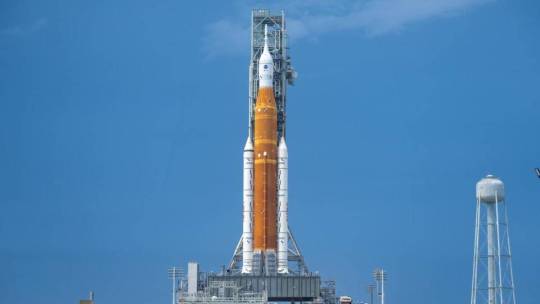
View On WordPress
#artemis#artemis 1#artemis 1 launch#artemis 1 mission#artemis 1 rocket launch#artemis 1 rocket launch florida#artemis 1 rocket launch scrubbed#artemis launch#artemis launch 2022#moon rocket#nasa artemis 1 rocket launch#nasa artemis 1 rocket launch scrubbed#nasa artemis launch#nasa moon mission#nasa moon rocket artemis 1 launch#nasa moon rocket launch#nasa moon rocket launch date#nasa rocket launch#rocket launch#space launch system
2 notes
·
View notes
Text
NASA’s decision to scrub rocket launch disappointing, but right call: Canadian astronaut
NASA’s decision to scrub rocket launch disappointing, but right call: Canadian astronaut
Canadian astronaut David Saint-Jacques says today’s decision to scrub the launch of NASA‘s new moon rocket is disappointing but necessary due to another leak found ahead of the planned test flight.
The Artemis 1 mission, which aims to send an uncrewed NASA Orion spacecraft and Space Launch System rocket to the moon, was delayed after the rocket sprang a fuel leak, forcing controllers to call off…

View On WordPress
#astronaut#Call#Canada#Canadian#Canadian astronaut#decision#disappointing#launch#NASA#NASA Artemis launch#NASA Artemis launch date#NASA Canadian astronaut#nasa moon rocket#NASA moon rocket Artemis#NASAs#Rocket#Science#scrub#world
0 notes
Text
The original Moon landing sites
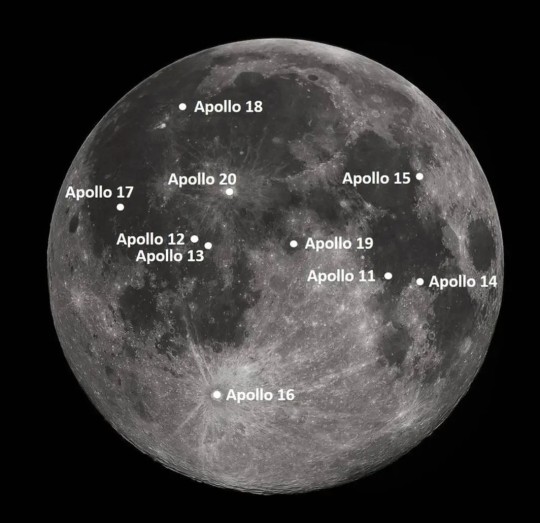
"NASA contracted to have 15 flight-worthy Saturn V rockets produced. Apollo 11 achieved the first landing with the sixth Saturn V, leaving nine for follow-on landings. The following landing sites were chosen for these missions, planned to occur at intervals of approximately four months through July 1972."
Note: I've updated this list with the original tentative planned launch dates.
G-type Mission
Apollo 11: (G) Mare Tranquillitatis, July 1969
H-type missions
Apollo 12: (H1) Ocean of Storms (Surveyor 3 site), November 1969
Apollo 13: (H2) Fra Mauro Highlands, March 1970
Apollo 14: (H3) Littrow Crater, July 1970
Apollo 15: (H4) Censorinus Crater, November 1970
J-type missions, the extended stay missions
Apollo 16: (J1) Descartes Highlands or Tycho Crater (Surveyor 7 site), April 1971
Apollo 17: (J2) Marius Hills or Marius Hills volcanic domes, September 1971
Apollo 18: (J3) Copernicus crater or Schröter's Valley or Gassendi crater, February 1972, later July 1973
Apollo 19: (J4) Hadley Rille, July 1972, later December 1973
Apollo 20: (J5) Tycho Crater or Copernicus Crater or Marius Hills, December 1972, later July 1974
As we all know, plans were changed and missions were cancelled. But it's nice to see what was initially planned.
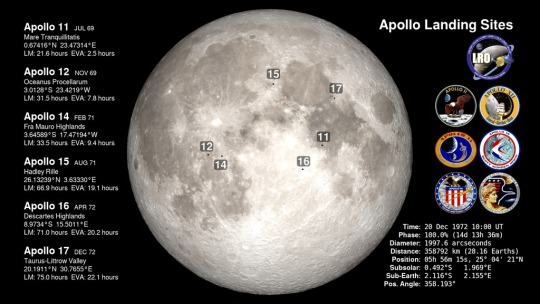
To compare with the actual landing sites and dates:
Apollo 12: (H1) Ocean of Storms (Surveyor 3 site), November 1969
Apollo 13: (H2) never landed, April 1970
Apollo 14: (H3) Fra Mauro, January-February 1971
Apollo 15: (J1) Hadley–Apennine, July-August 1971
Apollo 16: (J2) Descartes Highlands, April 1972
Apollo 17: (J3) Taurus–Littrow, December 1972
NASA ID: link, link
Information from Astronautix: link
Information from Wikipedia: link
#Apollo 11#Apollo 12#Apollo 13#Apollo 14#Apollo 15#Apollo 16#Apollo 17#Apollo 18#Apollo 19#Apollo 20#NASA#Apollo Program#Moon#Moon landing#Lunar Module#cancelled#G-type Mission#H-type mission#J-type mission#Cancelled Mission#my post
436 notes
·
View notes
Text
Follow NASA’s Artemis I Moon Mission: Live Tracker, Latest Images, and Videos
youtube
On Nov. 16, 2022, the Artemis I mission officially began with the launch of the Orion spacecraft atop the Space Launch System rocket. The rocket and spacecraft lifted off from historic Launch Complex 39B at NASA’s Kennedy Space Center in Florida.
Now, the Orion spacecraft is about halfway through its journey around the Moon. Although the spacecraft is uncrewed, the Artemis I mission prepares us for future missions with astronauts, starting with Artemis II.
Stay up-to-date with the mission with the latest full-resolution images, mission updates, on-demand and live video.
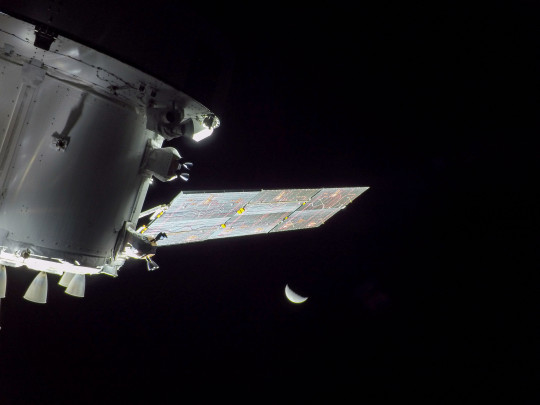
Imagery:
Find full-resolution images from the Orion spacecraft as they are released here.
Launch imagery can be found here. When Orion splashes down in the Pacific Ocean on Dec. 11, the images will be available here, as well!
youtube
Videos:
This playlist contains informational videos, as well as upcoming and past live events, about Artemis I.
You can watch a livestream of the Artemis I mission here. (Just a note: the livestream may cut off during moments when the Orion team needs higher bandwidth for activities.)
Keep yourself updated on the upcoming broadcasts of Artemis milestones with the NASA TV schedule.
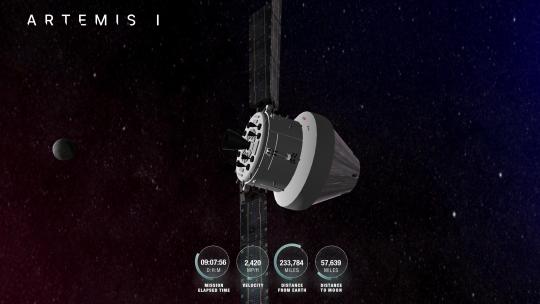
Trackers:
Our Artemis I Tracker uses live telemetry data streamed directly from Mission Control Center in Houston to show Orion position, attitude, solar array positions, and thruster firings throughout the mission.
“Eyes on the Solar System” shows Orion's position along the Artemis I trajectory and in relation to other NASA spacecraft and objects in the solar system.
“DSN Now” shows which antenna on Earth’s Deep Space Network is communicating with Orion.
youtube
Updates:
Read up on where Orion is and what’s next in the Artemis I mission with the Mission Blog.
Thank you so much for following with us on this historic mission. Go Artemis!
Make sure to follow us on Tumblr for your regular dose of space!
#nasa#space#moon#science#technology#artemis#nasamoonsnap#orion#megamoonrocket#sls#spacelaunchsystem#lunarmission#Youtube
1K notes
·
View notes
Text

NASA to launch sounding rockets into moon's shadow during solar eclipse
NASA will launch three sounding rockets during the total solar eclipse on April 8, 2024, to study how Earth's upper atmosphere is affected when sunlight momentarily dims over a portion of the planet.
The Atmospheric Perturbations around Eclipse Path (APEP) sounding rockets will launch from NASA's Wallops Flight Facility in Virginia to study the disturbances in the ionosphere created when the moon eclipses the sun. The sounding rockets had been previously launched and successfully recovered from White Sands Test Facility in New Mexico, during the October 2023 annular solar eclipse.
They have been refurbished with new instrumentation and will be relaunched in April 2024. The mission is led by Aroh Barjatya, a professor of engineering physics at Embry-Riddle Aeronautical University in Florida, where he directs the Space and Atmospheric Instrumentation Lab.
The sounding rockets will launch at three different times: 45 minutes before, during, and 45 minutes after the peak local eclipse. These intervals are important to collect data on how the sun's sudden disappearance affects the ionosphere, creating disturbances that have the potential to interfere with our communications.
The ionosphere is a region of Earth's atmosphere that is between 55 to 310 miles (90 to 500 kilometers) above the ground. "It's an electrified region that reflects and refracts radio signals and also impacts satellite communications as the signals pass through," said Barjatya. "Understanding the ionosphere and developing models to help us predict disturbances is crucial to making sure our increasingly communication-dependent world operates smoothly."
The ionosphere forms the boundary between Earth's lower atmosphere—where we live and breathe—and the vacuum of space. It is made up of a sea of particles that become ionized, or electrically charged, from the sun's energy or solar radiation.
When night falls, the ionosphere thins out as previously ionized particles relax and recombine back into neutral particles. However, Earth's terrestrial weather and space weather can impact these particles, making it a dynamic region and difficult to know what the ionosphere will be like at a given time.
It's often difficult to study short-term changes in the ionosphere during an eclipse with satellites because they may not be at the right place or time to cross the eclipse path. Since the exact date and times of the total solar eclipse are known, NASA can launch targeted sounding rockets to study the effects of the eclipse at the right time and at all altitudes of the ionosphere.
As the eclipse shadow races through the atmosphere, it creates a rapid, localized sunset that triggers large-scale atmospheric waves and small-scale disturbances or perturbations. These perturbations affect different radio communication frequencies. Gathering the data on these perturbations will help scientists validate and improve current models that help predict potential disturbances to our communications, especially high-frequency communication.
The APEP rockets are expected to reach a maximum altitude of 260 miles (420 kilometers). Each rocket will measure charged and neutral particle density and surrounding electric and magnetic fields. "Each rocket will eject four secondary instruments the size of a two-liter soda bottle that also measure the same data points, so it's similar to results from fifteen rockets while only launching three," explained Barjatya. Embry-Riddle built three secondary instruments on each rocket, and the fourth one was built at Dartmouth College in New Hampshire.
In addition to the rockets, several teams across the U.S. will also be taking measurements of the ionosphere by various means. A team of students from Embry-Riddle will deploy a series of high-altitude balloons. Co-investigators from the Massachusetts Institute of Technology's Haystack Observatory in Massachusetts and the Air Force Research Laboratory in New Mexico will operate a variety of ground-based radars taking measurements.
Using this data, a team of scientists from Embry-Riddle and Johns Hopkins University Applied Physics Laboratory are refining existing models. Together, these various investigations will help provide the puzzle pieces needed to see the bigger picture of ionospheric dynamics.
When the APEP-sounding rockets launched during the 2023 annular solar eclipse, scientists saw a sharp reduction in the density of charged particles as the annular eclipse shadow passed over the atmosphere.
"We saw the perturbations capable of affecting radio communications in the second and third rockets, but not during the first rocket that was before peak local eclipse," said Barjatya. "We are super excited to relaunch them during the total eclipse to see if the perturbations start at the same altitude and if their magnitude and scale remain the same."
The next total solar eclipse over the contiguous U.S. is not until 2044, so these experiments are a rare opportunity for scientists to collect crucial data.
IMAGE....This photo shows the three APEP sounding rockets and the support team after successful assembly. The team lead, Aroh Barjatya, is at the top center, standing next to the guardrails on the second floor. Credit: NASA/Berit Bland
10 notes
·
View notes
Text
WILL WE EVER COLONIZE OTHER PLANETS??
Blog#247
Wednesday, November 23rd, 2022
Welcome back,
While humans have long thought of gods living in the sky, the idea of space travel or humans living in space dates to at least 1610 after the invention of the telescope when German astronomer Johannes Kepler wrote to Italian astronomer Galileo: “Let us create vessels and sails adjusted to the heavenly ether, and there will be plenty of people unafraid of the empty wastes. In the meantime, we shall prepare, for the brave sky-travellers, maps of the celestial bodies.”
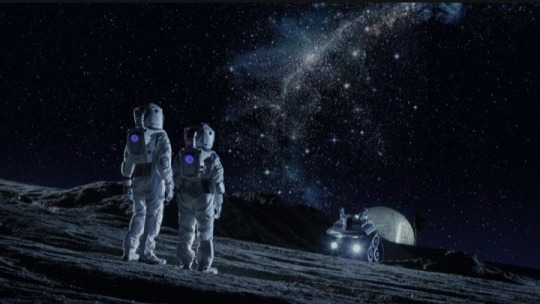
In popular culture, space travel dates back to at least the mid-1600s when Cyrano de Bergerac first wrote of traveling to space in a rocket. Space fantasies flourished after Jules Verne’s “From Earth to the Moon” was published in 1865, and again when RKO Pictures released a film adaptation, A Trip to the Moon, in 1902. Dreams of space settlement hit a zenith in the 1950s with Walt Disney productions such as “Man and the Moon,” and science fiction novels including Ray Bradbury’s The Martian Chronicles (1950).
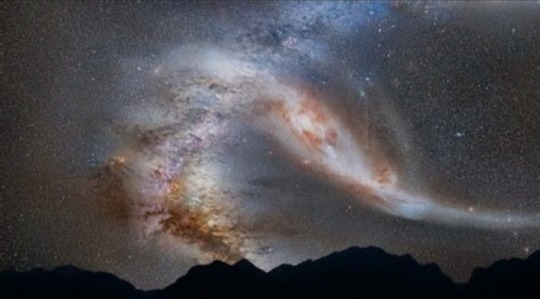
Fueling popular imagination at the time was the American space race with Russia, amid which NASA was formed in the United States on July 29, 1958, when President Eisenhower signed the National Aeronautics and Space Act into law. After the Russians put the first person, Yuri Gagarin, in space on Apr. 12, 1961, NASA put the first people, Neil Armstrong and Buzz Aldrin, on the Moon in July 1969. What was science fiction began to look more like possibility.

Over the next six decades, NASA would launch space stations, land rovers on Mars, and orbit Pluto and Jupiter, among other accomplishments. NASA’s ongoing Artemis program, launched by President Trump in 2017, intends to return humans to the Moon, landing the first woman on the lunar surface, by 2024.
As of June 17, 2021, three countries had space programs with human space flight capabilities: China, Russia, and the United States. India’s planned human space flights have been delayed by the COVID-19 pandemic, but they may launch in 2023. However, NASA ended its space shuttle program in 2011 when the shuttle Atlantis landed at Kennedy Space Center in Florida on July 21.

NASA astronauts going into space afterward rode along with Russians until 2020 when SpaceX took over and first launched NASA astronauts into space on Apr. 23, 2021. SpaceX is a commercial space travel business owned by Elon Musk that has ignited commercial space travel enthusiasm and the idea of “space tourism.” Richard Branson’s Virgin Galactic and Jeff Bezo’s Blue Origin have generated similar excitement.

Richard Branson launched himself, two pilots, and three mission specialists into space [as defined by the United States] from New Mexico for a 90-minute flight on the Virgin Galactic Unity 22 mission on July 11, 2021. The flight marked the first time that passengers, rather than astronauts, went into space.
Originally published on www.britannica.com
COMING UP!!
(Saturday, November 26th, 2022)
"WHAT IS THE COSMIC CENSORSHIP THEORY??"
#astronomy#outer space#alternate universe#astrophysics#spacecraft#universe#white universe#parallel universe#space#astrophotography
35 notes
·
View notes
Text
Artemis I: Launch Viewing Guide

@nasa is planning to launch its new Space Launch System (SLS) rocket on its maiden voyage later this week. The uncrewed Artemis I mission will be the first integrated test of NASA’s new deep space exploration systems, designed to return humanity to the Moon and, eventually, explore Mars. Currently targeting Wednesday, November 16, at 1:04 AM ET (0604 UTC), with a two-hour window from Kennedy Space Center’s Launch Complex 39B (LC-39B), the mission is anticipated to bring hundreds of thousands of spectators into the area with hopes of witnessing history. With paid viewing options selling out near-instantaneously and large crowds flocking to the area, many launchgoers are scrambling to find the best spots to watch the historic launch.
As a lifelong space nerd, former spaceflight media, and current NASA Launch Control Operator, I’ve seen launches from practically every viewing location on the Space Coast, from our gorgeous beaches to the rooftop of the Vehicle Assembly Building (VAB). In this guide, I will provide my recommended viewing locations for launch and give some pro tips to help ensure you have an unforgettable viewing experience.
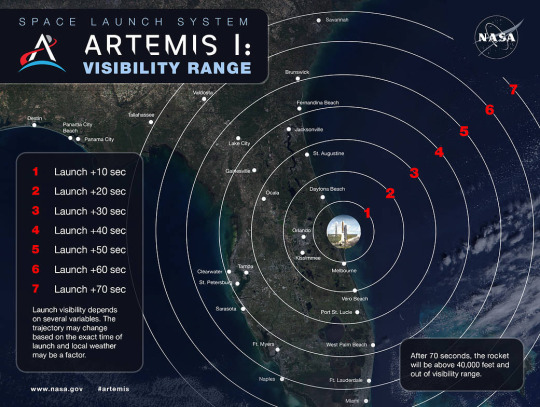
Scrubs Happen!
After previous scrubs and launch delays, I wanted to include this little section to help manage the expectations of first-time launchgoers. Scrubs and delays happen, more so with the first launch of a new vehicle. Keep in mind that a million things must go right for liftoff, and only one needs to go wrong for a scrub. While scrubs are disappointing, operators will always prioritize safety and mission assurance. As history has shown time and time again, “go fever” leads to disaster. As many veteran launchgoers will tell you, scrubs are part of the business. Always plan for a launch as if it were going to scrub. Include extra days to account for delays. If we happen to scrub on Wednesday (knock on wood), here are our backup dates:
Saturday, November 19, at 1:45 AM ET (0645 UTC)
Friday, November 25, at 10:10 AM ET (1510 UTC)
Pay attention to the NASA broadcast and local officials for the latest updates on the status of the launch.

Safety First!
As exciting as rocket launches are, please don’t do anything that would jeopardize your safety or the safety of others. NOTAMs, NOTMARs, launch hazard areas, and exclusion zones will be issued by the FAA, Coast Guard, Space Force, NASA, and local authorities in the days leading to the launch. Violating these can result in legal prosecution, heavy fines, and even delay the launch. It is best for everyone to follow the direction of local officials.
Pack Enough Supplies and Charge Up!
Bring enough bug spray, food, and water to last the entire day. Be sure to fully charge your devices and bring a power bank or two. Keep in mind that cellular coverage will be spotty due to the influx of traffic on launch day, so plan accordingly.
COVID-19
As much as we all hate hearing it, the pandemic hasn’t disappeared, and Brevard County is still considered a high transmission community — even without the large crowds. Please do your best to maintain social distancing. Make sure you are up-to-date with your vaccines and wear a mask if you are indoors. Most importantly, stay home if you are sick or have been exposed to/tested positive for Coronavirus. Don’t risk the health of others just to get a closer view of the launch. Be responsible.
Traffic, Traffic, Traffic!
Due to the high number of spectators traveling to the area for the launch, officials will enforce special traffic flows on launch day. Please drive carefully, remain vigilant, and follow the directions of local authorities. Yield to pedestrians, be patient, and drive defensively. Be sure to look over the traffic flow map below before heading out to your chosen viewing area!

Paid Viewing Options
While there are many fantastic areas to view for free, paid options offer amenities and stability that public viewing simply can’t. That said, this does not mean that paid locations are always better for the view. Public areas often offer a comparable, sometimes even better, view than their paid counterparts. I only recommend paid viewing to families, those physically unable to camp roadside for hours with limited amenities, or those interested in a more exclusive viewing experience. Most paid viewing options have sold out, and thus been removed from the list. Of those still available, here are my recommended paid viewing locations:
Airbnb, Vrbo, etc.
Another option for private launch viewing with maximum comfort is renting a house/room via Airbnb, Vrbo, etc. Prices and locations vary widely, though I recommend looking for rentals along the Indian River.
NOTE: Be weary of resale scams and scalpers. KSCVC does NOT allow the resale or transfer of purchased viewing packages.

Free Viewing Options
The Space Coast is known for its beautiful beaches and parks, all of which are excellent areas to view from! Free viewing options can often offer better views than paid viewing. However, they do require a bit more planning.
When to Arrive
You will need to get to your planned location EARLY! The most determined launch enthusiasts will be camping at their spots for 8-10 hours. Unless you are a photographer needing the absolute best spot your site has to offer, you do not need to do that. I recommend arriving around 3-4 hours prior to launch for the best chance at viewing from your chosen location.
Clean Before You Leave
When viewing at any location, please clean up after yourself! Leave the area better than you found it. Help keep our beaches and parks safe and beautiful.
Public Viewing Areas
Some of the best public viewing areas available are located just west of KSC along the Indian River. Many of these locations offer an unobstructed view of launch. However, because of this, you can expect the majority of the traffic to be centered there. If you don’t mind viewing a bit farther away, or don’t need an unobstructed view of the pad, there are plenty of areas to the south that offer decent viewing and may escape the worst of the traffic.
You can view it practically everywhere in the area. This is one of the largest, most powerful rockets ever launched. Trust me, you’ll see it no matter where you are. However, if you want the best possible viewing spots, here are my recommendations:
Max Brewer Bridge / Parrish Park
Distance: 10 miles (16 km)
Amenities: Bathrooms
Parking: Extremely limited
Space View Park
Distance: 11 miles (18 km)
Amenities: Bathrooms
Parking: Extremely limited
Sand Point Park
Distance: 11 miles (18 km)
Amenities: Bathrooms, Pavillions
Parking: Extremely limited
Marina Park
Distance: 11 miles (18 km)
Amenities: Bathrooms, Pavillions
Parking: Extremely limited
William J. Manzo Memorial Park
Distance: 12 miles (19 km)
Amenities: Bathrooms, Pavillions, Electric Outlets
Parking: Extremely limited
Rotary Riverfront Park
Distance: 12 miles (19 km)
Amenities: Pavillions
Parking: Extremely limited
Chain of Lakes Park
Distance: 13 miles (19 km)
Amenities: Bathrooms, Pavillions, Observation Tower
Parking: Limited
Cherie Down Park
Distance: 16 miles (26 km)
Amenities: Bathrooms, Pavillions
Parking: Extremely Limited
Cocoa Beach Pier
Distance: 18 miles (29 km)
Amenities: Bathrooms, Pavillions, Restaurants
Parking: Available
NOTE: Playalinda Beach will be CLOSED for launch due to its close proximity to LC-39B and the launch window opening outside of its normal operating hours. Max Brewer Bridge will likely only allow foot traffic on Tuesday night/Wednesday morning. SOME OF THESE LOCATIONS MAY HAVE BEEN SEVERELY IMPACTED BY HURRICANE NICOLE.

Remote Viewing Options
Can’t make it over for launch or simply want to enjoy from the comfort of your home? No worries! Here’s where you can watch, listen, and follow along with the launch of Artemis I!
NASA TV
NASA will be streaming live coverage on NASA TV and NASA social media. A clean feed will be carried on the NASA TV media channel featuring views of the rocket and audio from a commentator in the Launch Control Center (LCC) throughout. Countdown net will be begin streaming publicly at T-15 minutes.
Content Creators and Online Streams
There will be plenty of content creators and spaceflight media outlets hosting their own streams of the launch as well! Check in with your favorite creators to see when their coverage begins.
NOTE: Be weary of clicking links posted to social media. Double-check to ensure the poster is a trusted source BEFORE clicking. Be on the lookout for phishing attacks and malicious links, which tend to increase during large events like this.
Radio
The best option for those viewing the launch in-person. Get live launch updates while circumventing the area’s overburdened cellular coverage! Coverage will be broadcast on local amateur VHF radio frequency 146.940 MHz and UHF radio frequency 444.925 MHz, FM mode. Only availble to those in the Brevard County area.
Dial-In
The second best option for those viewing in-person. Want live updates but don’t have a radio or enough signal to stream a video? No worries! Full audio from the launch broadcast will be carried on 321–867–1220, -1240, -1260 or –7135., -1240, -1260 or –7135.

We Are Going
As someone lucky enough to play a small role in this incredible program, thank you for sharing your excitement and coming out to witness this historic launch. We are going because of individuals like you, those who look up and see not an empty void but a vast sea of stars beckoning our exploration. Launches, especially ones of this magnitude, ignite the curiosity and imaginations of people far and wide. It was in the final years of the Shuttle Program that my passion was realized. I hope that, with Artemis, the next generation will hear their calling too. Through Artemis, we are going to push further than ever before and test the true might of human adaptability and ingenuity. We. Are. Going.
#nasa#artemis#space launch system#space#spaceflight#science#engineering#travel guide#spacecraft#outer space
10 notes
·
View notes
Text
Krispy Kreme Artemis Moon Doughnut
Food
Type of Funny Food: Event
Introduced: August 2022
Location: Krispy Kreme

To celebrate the journey of NASA's Artemis 1 and its lunar destination, participating Krispy Kreme locations offered the "Artemis Moon Doughnut" for a single day- the (planned) launch date of the rocket.

The doughnut was filled with cheesecake-flavored cream and topped with cookies and cream icing.
2 notes
·
View notes
Text
Artemis 1 mission breakdown
We are going to the moon! This video shows different stages of the Artemis I mission, (bottom)is the launch, (middle) is the beginning of the journey, and (top) is Orion at 9.5 hours into the trip to the moon.
Artemis I is an uncrewed flight test that will provide a foundation for human deep space exploration, and demonstrate our capability to extend human existence to the Moon and beyond.
• Launch site: Launch Pad 39B at NASA’s Kennedy Space Center in Florida
• Launch date: Nov. 16, 2022
• Mission Duration: 25 days, 11 hours, 36 minutes
• Destination: distant retrograde orbit around the Moon
• Return to Earth: Dec. 11, 2022 The mission will end with the Orion capsule (which will hold the crew of astronauts for future missions) splashing down in the Pacific Ocean after reentering Earth's atmosphere
• Orion will stay in space longer than any human spacecraft has without docking to a space station
• Artemis I mission will demonstrate the performance of both Orion and the SLS rocket and test our capabilities to orbit the Moon and return to Earth safely
• If all goes well with Artemis I, Nasa will fly astronauts on the next mission called Artemis II, to orbit the moon, perhaps in the year 2024. And if that goes well, it's time for Artemis III, which will land astronauts on the surface of the moon for a few days, while they perform scientific studies
Credit: NASA
7 notes
·
View notes
Text
2023 Space and Astronomy News: What to Expect
https://sciencespies.com/space/2023-space-and-astronomy-news-what-to-expect/
2023 Space and Astronomy News: What to Expect

As years in space and astronomy go, 2022 is going to be a tough act to follow.
NASA wowed us with cosmic scenes captured by the James Webb Space Telescope. The DART mission slammed an asteroid into a new orbit. Artemis I set humanity on a course back to the moon. China finished building a new space station in orbit. SpaceX launched 61 rockets in 12 months. And the invasion of Ukraine imperiled Russia’s status as a space power.
It’s a lot to measure up to, but 2023 is bound to have some excitement on the launchpad, the lunar surface and in the sky. Once again, you can get updates on your personal digital calendar by signing up for The New York Times’s Space and Astronomy Calendar. Here are some of the major events you can expect. Not all of them have certain dates yet, but Times journalists will provide additional information as it emerges. Learn more at nytimes.com/spacecalendar
New Rockets
NASA got its giant Space Launch System off the ground for the first time in 2022, lighting up the night in Florida with an incredible stream of flame as it carried the Artemis I mission toward the moon. That shifted attention to SpaceX, which is building a next generation rocket, Starship, that is also central to NASA’s crewed Artemis III moon landing attempt.
SpaceX cleared a key environmental review that would allow it to launch an uncrewed orbital test flight from South Texas if it met certain conditions. But the rocket wasn’t ready for flight in 2022. The company has not announced a date for a test this year, but regular ground tests of Starship equipment indicate it is working toward one.
The pathfinder first stage of the Vulcan Centaur, a new rocket by United Launch Alliance that will eventually replace that company’s Atlas V.United Launch Alliance
Numerous other rockets may take flight for the first time in 2023. The most important, Vulcan Centaur by United Launch Alliance, will eventually replace that company’s Atlas V, a vehicle that has been central to American spaceflight for two decades. The Vulcan relies on the BE-4 engine built by Blue Origin, the rocket company founded by Jeff Bezos. The same engine will in turn be used in Blue Origin’s New Glenn rocket, which may have a test flight late this year.
A number of American private companies are expected to test new rockets in 2023, including Relativity and ABL. They could be joined by foreign rocket makers, including Mitsubishi Heavy Industries which could test Japan’s H3 rocket in February, and Arianespace, which is working toward a test flight of Europe’s Ariane 6 rocket.
New Lunar Landings
We’re guaranteed at least one lunar landing attempt in 2023. A Japanese company, Ispace, launched its M1 mission on a SpaceX rocket in December. It’s taking a slow, fuel-efficient route to the moon and is set to arrive in April, when it will try to deploy a rover built by the United Arab Emirates, a robot built by Japan’s space agency, JAXA, as well as other payloads.
There could be as many as five more lunar landing attempts this year.
NASA has hired a pair of private companies to carry payloads to the lunar surface. Both of them, Intuitive Machines of Houston and Astrobotic Technology of Pittsburgh, faced delays in 2022, but may make the trip in the coming months.
They could be joined by three government space programs’ lunar missions. India’s Chandrayaan-3 mission was delayed last year but could be ready in 2023. A Japanese mission, Smart Lander for Investigating Moon, or SLIM, aims to test the country’s lunar landing technologies. Finally, Russia’s Luna-25 mission was postponed from last September, but Roscosmos, the Russian space agency, may try this year.
New Space Telescopes
Scientists in 2019 at work with the European Space Agency’s Euclid spacecraft, which will study energy and dark matter. Its 2022 launch was postponed by the Russian invasion of Ukraine.S. Corvaja/European Space Agency
The Webb telescope wowed space enthusiasts and scientists with its views of the cosmos, but we may get new vantages from a variety of orbital observatories.
The most significant may be Xuntian, a Chinese mission setting off later in the year that will be like a more sophisticated version of the Hubble Space Telescope. The spacecraft will survey the universe at optical and ultraviolet wavelengths in an orbit around Earth close to the country’s Tiangong space station.
A Japanese-led mission, XRISM, pronounced chrism, could launch earlier in the year as well. The mission will use X-ray spectroscopy to study clouds of plasma, which could help to explain the universe’s composition. A European space telescope, Euclid, may also launch on a SpaceX rocket after the Russian invasion of Ukraine resulted in the spacecraft losing its seat on a Russian Soyuz rocket. It will study the universe’s dark energy and dark matter.
New Planetary Missions
A new spacecraft will head toward Jupiter this year, aiming to become the first to ever orbit another planet’s moon. The European Space Agency’s Jupiter Icy Moon Explorer, or JUICE, will launch from an Ariane 5 rocket as early as April 5 to set off to the Jovian system, arriving in 2031. Once it reaches the gas giant, it will move to conduct 35 flybys of three of the giant world’s moons: Callisto, Europa and Ganymede, all of which are believed to have subsurface oceans. In 2034, JUICE will begin orbiting Ganymede, the largest moon in the solar system.
Heading closer to the sun will be Rocket Lab, a small launch company that was founded in New Zealand. It aims to use its Electron rocket to send a mission to Venus. The company’s Photon satellite will try to deploy a small probe, built with Massachusetts Institute of Technology researchers, that will briefly study the planet’s toxic atmosphere. The mission was planned for May, but it is expected to face delays while the company prioritizes missions for its other customers.
A Total Eclipse and a Not-So-Total One
There will be two solar eclipses in 2023.
A total eclipse on April 20 will be more of a Southern Hemisphere event, and the moon will only blot out the sun in remote parts of Australia and Indonesia. (Perhaps not a bad time to be on a boat in parts of the Indian and Pacific Oceans, too.)
But Americans may get a good show on Oct. 14, when North America will be visited by an annular eclipse. Eclipses of this type are sometimes called “ring of fire” eclipses because the moon is too far from Earth to fully block the sun but creates a ring-like effect when it reaches totality. The eclipse’s path runs through parts of Oregon, California, Nevada, Utah, Arizona, New Mexico and Texas before dipping into Central and South America. Where the weather cooperates, it should be a great solar show and a nice lead up for the April 8, 2024 total eclipse that will cross the United States from southwest to northeast.
#Space
3 notes
·
View notes
Note
I have decided that you need some joy tonight so imagine Colin, Jan and Richard partaking in one another's hobbies to varying degrees of success.
I love the fandom accepted headcanon of Colin being a great cook and I think he tries to get Jan and Richard to help in the kitchen. He totally mother-hens them though and ends up kicking them out of the kitchen after Jan makes a joke about murder while chopping with a knife and Richard continues to mumble about French cuisine being better.
Jan is super into exactly 3 things other than football. Rocks, Space and True Crime. He knows that Colin is too squeamish for true crime podcasts and shows and rocks are just his own special interest so he gets them interested in space things. They get super into it and all three of them watch NASA rocket launches and interviews with astronaunts and have stargazing dates when they're out of the city.
Richard goes through a whole extensial crisis about not really having a hobby (he will at one point whine something along the lines of "It's not fair! Jan has three and I have none!") but he eventually decides to learn how to play piano. Jan and Colin are very supportive and are his eager audience. Neither of them learn alongside him but Jan enjoys tuning pianos for him while Colin enjoys sitting on a piano and being sexy while Richard plays
I actually DID need joy tonight cause I got rejected like no one’s business 😂 (but also RIP to me and my dating life 😂 so i got this lol)
I agree that I love the fandom wide acceptance of Colin being a good cook. I think he is too, and I love seeing fics where Colin cooks for people. I also love that tenderness and caring for him. I HC Jan and Richard heckling them the whole time about his recipes because while it’s funny it’s so correct. The “in my country, they make it like this ….” jokes that Richard and Jan make while Colin turns around and is like “when did either of you learn to cook, eh?”
It’s funny cause I also HC Jan as being into rocks and space and all that (see my fic where I have Jan and Colin bond over space while trying to buy gifts for nieces)!! I think that Jan is just so fascinated by otherworldly things. I see him jokingly believing in random things just to bother Colin and Richard. Listen, Jan firmly believes that the Moon landing was real and all that but if it just so happens to get under Colin’s skin to deny it, who is Jan to say the moon landing was real?
And awwww! I love seeing Richard pick up piano as a hobby. I just know he loves learning how to play songs that Colin and Jan love on piano and surprising the both of them with a random concert just for them haha. I know that Stephen is talented in this regard IRL but with Richard … it’s just so sweet that he would learn to play some of Colin’s and Jan’s favorite songs on piano.
#i pressed publish post before i finished providing my thoughts#but i freaking love them!!!#colin x jan x richard#colin hughes#jan maas#richard montlaur#ted lasso
6 notes
·
View notes
Text
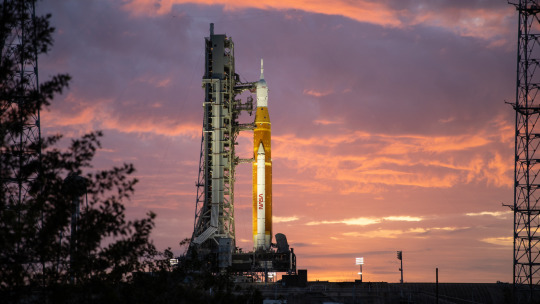
NASA's Artemis I megaphoto board should leave today towards the Moon, on the second attempt
Fernando Valduga By Fernando Valduga 09/03/2022 - 11:05 in Space
NASA is estimating at 2:17 p.m. local time (15:17 p.m.) on Saturday, September 3, for the launch of Artemis I, the first integrated test of NASA's Space Launch System (SLS) rocket, the Orion spacecraft and the ground systems. Learn how to watch.
There is a two-hour launch window for a second attempt at the agency's Kennedy Space Center in Florida.
The Artemis I flight test is a 42-day unmanned mission around the Moon that will pave the way for a manned flight test and future human lunar exploration as part of Artemis.
Live coverage of the events will be broadcast on NASA Television, on the NASA app, on the agency's YouTube page (below) and on the agency's website at: https://www.nasa.gov/live
youtube
The countdown to the launch will resume this Saturday, September 3, at the opening of a 2.5-hour planned wait, which will begin at 4:37 a.m.
The mission managers aborted the first launch attempt on August 29, when the launch controllers were unable to cool the four RS-25 engines, with an engine with higher temperatures than the other engines. Currently, teams are analyzing data, updating procedures and checking hardware to solve problems.
"There is no guarantee that we will leave on Saturday, but we will try," Mike Sarafin, manager of NASA's Artemis 1 mission, told reporters on Thursday (September 1). "The technical teams put a huge amount of work in a very short period of time to bring us here."
Tags: SpaceSpace - Exploration of the MoonNASANASA - ArtemisNASA - SLS/Orion
Previous news
USAF's CV-22 Osprey is "stuck" in a nature reserve in Norway
Fernando Valduga
Fernando Valduga
Aviation photographer and pilot since 1992, he has participated in several events and air operations, such as Cruzex, AirVenture, Dayton Airshow and FIDAE. It has works published in specialized aviation magazines in Brazil and abroad. He uses Canon equipment during his photographic work in the world of aviation.
Related news
SPACE
NASA sets a new date for the second attempt to launch Artemis I
08/31/2022 - 06:00
SPACE
NASA postpones the launch of the Artemis 1 rocket after problems arise during the countdown
08/29/2022 - 09:57
SPACE
How to watch the launch of NASA's Artemis I SLS megafog today
08/29/2022 - 06:00
BRAZIL
FAB signs contract with Canadian company for space vehicle launches
08/28/2022 - 10:00
SPACE
NASA's Ingenuity helicopter makes 30th flight on Mars
08/24/2022 - 19:00
SPACE
ICEYE will dedicate satellite to the use of the Ukrainian government
08/22/2022 - 06:00
homeMain PageEditorialsINFORMATIONeventsCooperateSpecialitiesadvertiseabout
Cavok Brazil - Digital Tchê Web Creation
Commercial
Executive
Helicopters
HISTORY
Military
Brazilian Air Force
Space
Specialities
Cavok Brazil - Digital Tchê Web Creation
1 note
·
View note
Text
NASA has excitedly confirmed that it will fly scientific craft to the distant moon
Folks, it’s happening.
NASA announced its unprecedented Dragonfly mission — which will fly a car-sized craft with eight spinning rotors around Saturn’s moon Titan — has been confirmed for flight. The mission, in its advanced stages of design and manufacturing, has an approved budget, a RIDE (heavy-lift rocket) and a launch date of 2028.
“Dragonfly is a fantastic science mission with a broad…

View On WordPress
0 notes
Text
"NASA achieved a major milestone April 3 for production of new RS-25 engines to help power its Artemis campaign to the Moon and beyond with completion of a critical engine certification test series at NASA’s Stennis Space Center near Bay St. Louis, Mississippi.
The 12-test series represents a key step for lead engines contractor Aerojet Rocketdyne, an L3Harris Technologies company, to build new RS-25 engines, using modern processes and manufacturing techniques, for NASA’s SLS (Space Launch System) rockets that will power future lunar missions, beginning with Artemis V."
Date: April 3, 2024
NASA's Marshall Space Flight Center: link
#Space Launch System#SLS#Rocket#Artemis program#NASA#Space Shuttle Main Engine#SSME#Rocketdyne RS-25#RS-25#Rocket Engine#Test Stand#John C. Stennis Space Center#Stennis Space Center#SSC#Hancock County#Mississippi#April#2024#video#my post
33 notes
·
View notes
Link
NASA currently is working with several commercial companies as part of the agency’s VADR (Venture-Class Acquisition of Dedicated and Rideshare) launch services contract, providing new opportunities for science, and technology payloads. These include: ABL Space Systems of El Segundo, California Astra Space Inc. of Alameda, California Blue Origin Florida, LLC of Merritt Island, Florida Firefly Space Transport Services of Cedar Park, Texas L2 Solutions DBA SEOPS, LLC of Houston, Texas Northrop Grumman Systems Corporation of Chandler, Arizona Phantom Space Corporation of Tucson, Arizona Relativity Space Inc. of Long Beach, California Rocket Lab USA Inc. of Long Beach, California SpaceX (Space Exploration Technologies Corp.) of Hawthorne, California United Launch Services LLC of Centennial, Colorado Building on NASA’s previous procurement efforts to foster development of a growing U.S. commercial launch market, VADR provides Federal Aviation Administration -licensed commercial launch services for payloads that can tolerate higher risk. By using a lower level of mission assurance, and commercial best practices for launching rockets, these highly flexible contracts help broaden access to space through lower launch costs. Awards Update Task orders under the VADR contract include launch services for several small satellite missions. CubeSats are a class of nanosatellites that use a standard size and form factor. The standard CubeSat size uses a “one unit” or “1U” measuring 10x10x10 centimeters and is extendable to larger sizes; 1.5, 2, 3, 6, and even 12U. A CubeSat typically weighs less than 2 kilogram (4.4 pounds) per unit. Given the standardized size of these payloads and the ability to launch as a rideshare, rockets and launch dates are subject to change for these missions by the launch provider. This flexibility is one of the reasons NASA can cost-efficiently secure launch services for these small satellites. NASA awarded L2 Solutions DBA SEOPS, LLC a task order to secure the launch of two 6U CubeSats for the agency’s Ames Research Center in California’s Silicon Valley as part of the agency’s Pathfinder Technology Demonstrator (PTD) series of missions. The demonstration flight tests the operation of a variety of novel CubeSat technologies in low Earth orbit, providing significant enhancements to the performance of these small and effective spacecraft. Over the course of multiple planned PTD missions, the successful demonstration of new subsystem technologies will increase small spacecraft capabilities, enabling direct infusion into a wider range of future science, and exploration missions. The two nanosatellites, PTD-4 and PTD-R, will launch on SpaceX’s Transporter-11 mission out of Vandenberg Space Force Base in Lompoc, California. NASA awarded SpaceX a task order to launch Dione under the agency’s CubeSat Launch Initiative. The 6U CubeSat from Goddard Spaceflight Center in Greenbelt, Maryland, will quantify how Earth’s ionosphere and thermosphere respond to electromagnetic and kinetic energy inputs from the magnetosphere. The mission is a collaboration with Catholic University of America, Utah State University, and Virginia Tech. NASA’s Science Mission Directorate Heliophysics Division is funding this effort. Dione is targeted to launch no earlier than mid-2024. NASA awarded SpaceX a task order to launch ARCSTONE under the agency’s CubeSat Launch Initiative. The 6U CubeSat, built at NASA’s Langley Research Center in Hampton, Virginia, will carry a spectrometer to low Earth orbit to establish a lunar calibration standard that will improve weather and climate sensors. ARCSTONE will use the Moon’s spectral reflectance for Earth science observations and is targeted to launch no earlier than mid-2025. NASA awarded SpaceX a task order for the launch of TSIS-2 (Total and Spectral Solar Irradiance Sensor-2). TSIS-2 will measure the Sun’s energy input to Earth. Since 1978, various satellites have measured the Sun’s brightness above Earth’s atmosphere. TSIS-2 will add solar irradiance measurements. Unlike its predecessor TSIS-1, which operates from the International Space Station, TSIS-2 will ride on a free-flying spacecraft. Managed by NASA Goddard, TSIS-2 has instruments from the Laboratory for Atmospheric and Space Physics at the University of Colorado, Boulder. A launch date is under review. Previously Announced Task Orders: PREFIRECubeSats for Phantom Space Corp.EscaPADETwo CSLI Missions Awarded to SpaceXTROPICSTRACERS
0 notes
Photo


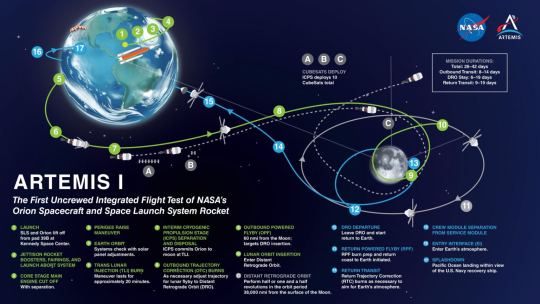



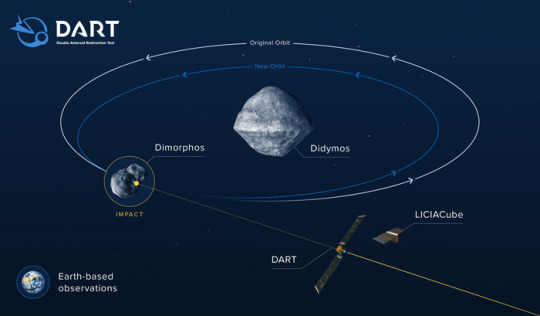



New SpaceTime out Monday: SpaceTime 20220725 Series 25 Episode 82 A launch date set for NASA’s Artemis-1 mission to the Moon NASA is looking at August 29 as the potential launch date for the maiden flight of the massive SLS Moon rocket on Artemis-1. Warnings about the DART asteroid impact mission A new study warns that NASA’s planned DART mission could leave its target asteroid badly deformed. Counting down to the death of a red giant Astronomers have for the first time witnessed a rare stellar pulse that is foreshadowing the death of a star known as a red giant. Jupiter shows off its rings Hot on the heels of last week’s spectacular first images from NASA's James Webb Space Telescope astronomers have released some stunning images including some stunning images of Jupiter, its moons, and it’s hard to see ring system. The Science Report The latest State of the Environment report is painting a dire picture of climate inaction in Australia. Hospitals starting to gear up across Australia with deaths from COVID on the increase again. The UK has crossed the 40°C 'milestone' for the first time in recorded history. Skeptic's guide to the problem with SLAPP suits SpaceTime -- A brief history SpaceTime is Australia’s most respected astronomy and space science news program – averaging some three million downloads globally every year. The show reports on the latest stories and discoveries making news in astronomy, space flight, and science. SpaceTime features weekly interviews with leading Australian scientists about their research. The show began life in 1995 as ‘StarStuff’ on the Australian Broadcasting Corporation’s (ABC) NewsRadio network. Award winning investigative reporter Stuart Gary created the program during more than fifteen years as NewsRadio’s evening anchor and Science Editor. Gary’s always loved science. He studied astronomy at university and was invited to undertake a PHD in astrophysics, but instead focused on his career in journalism and radio broadcasting. He worked as an announcer and music DJ in commercial radio before becoming a journalist and eventually joining ABC News. He wrote, produced and hosted StarStuff from its inception, consistently achieving 9 per cent of the national Australian radio audience based on the ABC’s Neilsen ratings survey figures for the five major Australian metro markets: Sydney, Melbourne, Brisbane, Adelaide, and Perth. The StarStuff podcast was published on line by ABC Science -- achieving over 1.3 million downloads annually. However, after some 20 years, the show finally wrapped up in December 2015 following ABC funding cuts, and a redirection of available finances to increase sports and horse racing coverage. Rather than continue with the ABC, Gary resigned so that he could keep the show going independently. StarStuff was rebranded as “SpaceTime”, with the first episode being broadcast in February 2016. Over the years, SpaceTime has grown, tripling its former ABC audience numbers and expanding to include new segments such as the Science Report -- which provides a wrap of general science news, weekly skeptical science features, special reports looking at the latest computer and technology news, and Skywatch – which provides a monthly guide to the night skies. The show is now published three times a week and is also available from the United States National Science Foundation on Science Zone Radio, and through both i-heart Radio and Tune-In Radio.
#space#science#Astronomy#physics#news#nasa#esa#asa#starstuff#spacetime#spacetimewithstuartgary#abcstarstuff#abc starstuff#universe#galaxy#star#planet#moon#black holes#supernovae#rocket#astro#cosmos#astronaut#telescope
23 notes
·
View notes